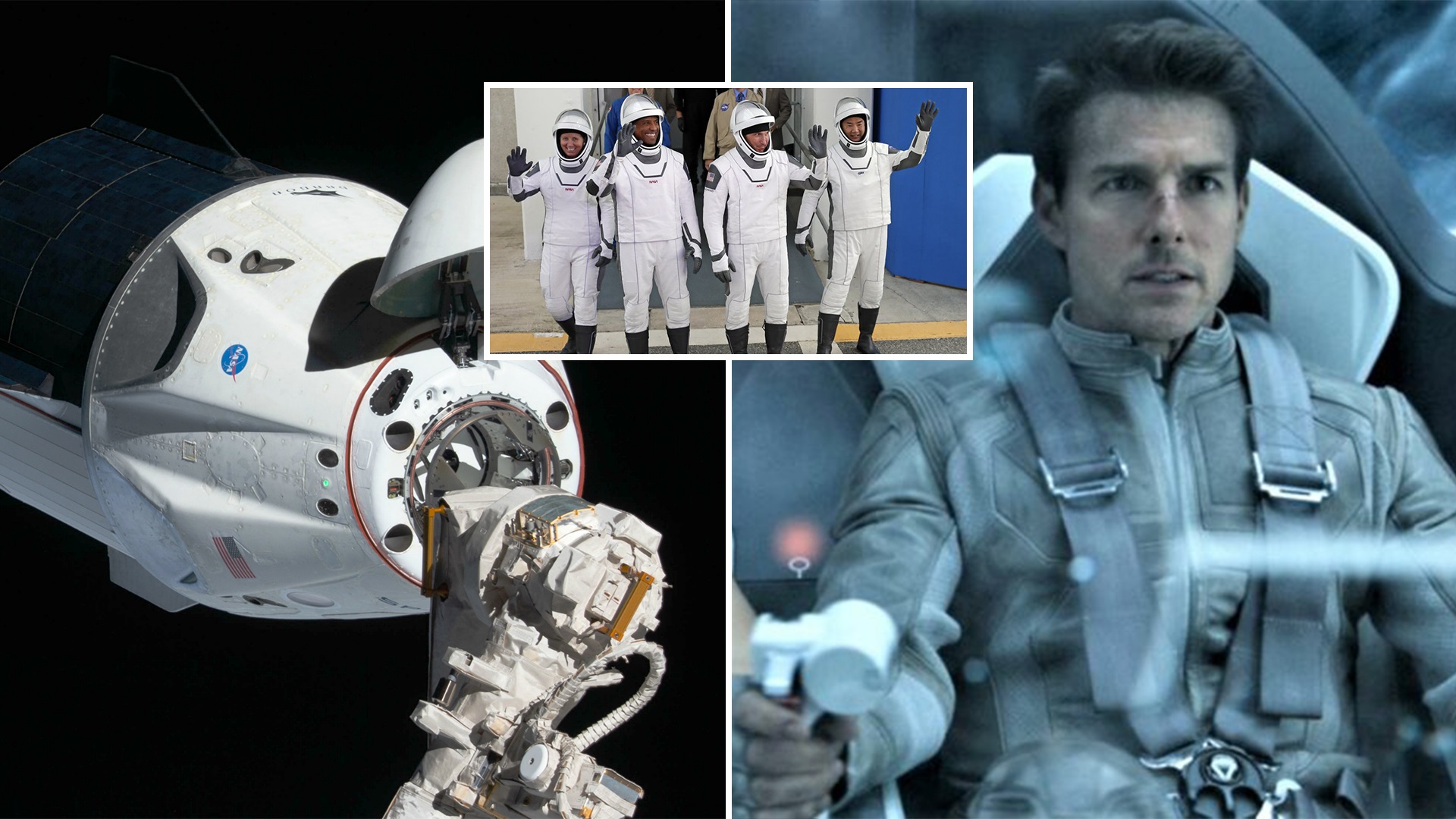Veteran actor Tom Cruise was startled by astronaut Victor Glover’s adventures aboard Space Exploration Technologies Corporation’s (SpaceX) Falcon 9 rocket and the Crew Dragon spacecraft in a podcast with the National Aeronautics and Space Administration (NASA).
Glover was a member of the NASA-SpaceX Crew-1 mission to the International Space Station, which launched in November 2020 and was the first operational astronaut trip for the Crew Dragon spacecraft after NASA approved it after a demonstration flight earlier in the year.
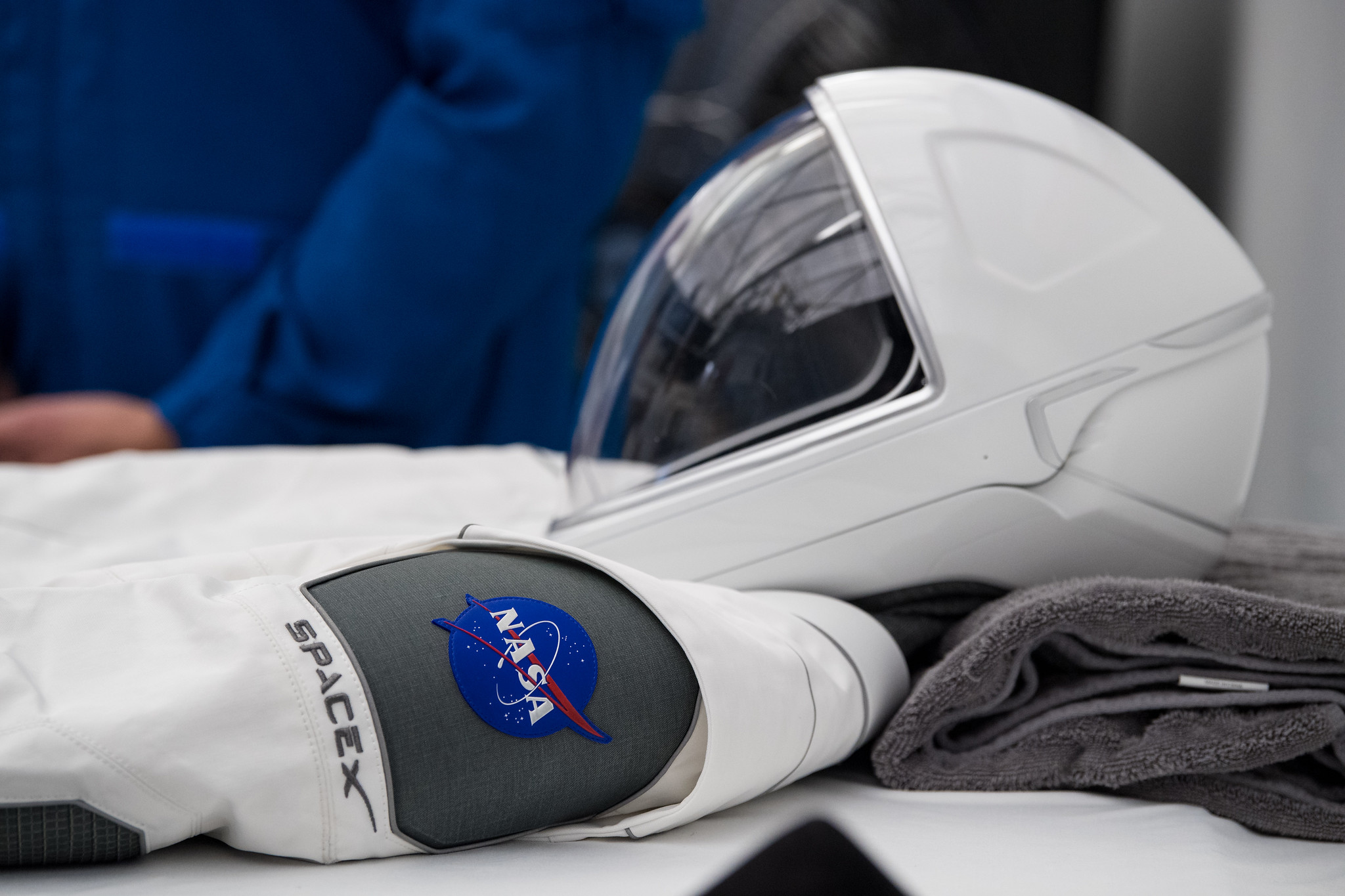
Cruise and Glover spoke on a NASA podcast called “The Body in Space,” which was published on Friday for a discussion that took place in November of last year.
Glover’s experience on SpaceX’s spaceship, the necessity and relevance of crewed flights to the International Space Station (ISS) for Mars exploration, and the extraordinary strength and endurance levels astronauts must achieve as part of their job were all covered during their time together.
According to NASA Astronaut Victor Glover, riding aboard SpaceX’s Falcon 9 rocket was the best part of his journey to the International Space Station.
Cruise began the discussion by inquiring about Glover’s experience flying on the Falcon 9 rocket and how it compared to flying combat jets. Glover is a Commander in the United States Navy, and throughout his career as a test pilot and a Navy aviator, he has operated a variety of aircraft.
When asked how SpaceX’s Crew Dragon differed from these aircraft, which included the F/A-18 Hornet, Glover said the absence of tactile controls on the Dragon spaceship was the first difference he noticed.
SpaceX’s spacecraft is planned to be operated entirely by touchscreens, which is a different setup than fighter aircraft, which use pedals and a stick to control various flying characteristics.
The NASA astronaut continued by saying:
But as I learned more about the car and its mission, I realized that the touch screen was really rather useful. It was a huge success. The ride aboard the Falcon 9 rocket was the most thrilling aspect of it all. It is a super-efficient liquid rocket.
It is silky smooth, yet it jumped right off the pad. We were all joyful as we reached the 100-kilometer mark. It was just incredible. The accelerations and decelerations are really noticeable.
And then when we got to the top level, the second stage, and you just start gaining speed, it was – I have pulled g in fighter planes before, but to be able to pull g for over 10 minutes straight was just power like I have never experienced. It is not even possible to launch or land on a carrier.
Cruise then zeroed down on Glover and inquired about the Dragon’s g-forces. The g-force is the force that pilots and passengers experience as they accelerate during flight, and Glover’s reaction was similar to his one following his return to Earth in May of last year. The following is Cruise’s follow-up and Glover’s response:
Tom Cruise: I am Tom Cruise. Really. I have been lucky, I have had several launches, and I have landed on carriers, the Roosevelt, and the g, the power that comes off there is fairly remarkable. What was it like with the Dragon in the? What was it like for you, Falcon 9? How much g were you pulling, and I know you are lying down; how did it feel?
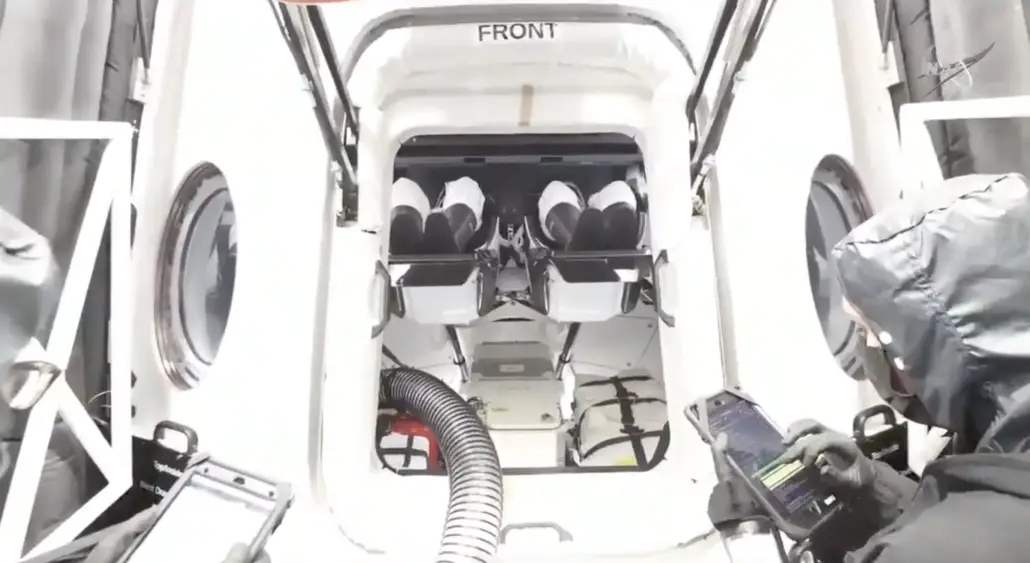
Victor Glover (Victor): Yes, and as a result, it is distinct. The g travel from your head to your toe in the fighter, which is why we performed these exact techniques to maintain blood flowing to your brain so you do not grey out or blackout.
On a rocket launch, the g in your chest goes into your chest, so you can naturally withstand more g in that direction, and the g is really lower. So, the most g we saw was approximately four and a half, but in a fighter, you will feel something else. I have pulled nine g in a fighter aircraft, but it was only for seconds.
And, you know, in a dog battle, in a turning fight, I have held 3 to 4 g for maybe a minute or a minute and a half. But, you know, on the Falcon, you accelerate the whole time, for approximately nine minutes, except for staging and throttle down.
It took about eight minutes and fifty seconds. I mean, you are speeding the whole time because you are 200 kilometers above the Earth and traveling at 17,000 mph. It is an incredible amount of strength. So, for approximately three minutes, we were over 3 and a half g, which is incredible.
The conversation then turned gears to address Glover’s time aboard the International Space Station. The astronaut spent a total of 168 days in space as part of his mission, which included four spacewalks. He had to operate on several sections of the ISS, including cameras, power equipment, and modules.
The difficult experience of spacewalks and spending lengthy periods of time in microgravity, according to Glover, is physically taxing and necessitates extensive use of the hands and fingers. He also discussed the effects of prolonged space travel on human bones.
As the astronaut puts it:
It is, nevertheless, quite physically demanding. You are going about in a suit that may weigh up to a thousand pounds with your body, and you hardly use your legs.
It is like running two marathons while being completely dependent on your hands. When you are through, your hands and fingers will be quite painful. As a result, it is the most physically demanding aspect.
In the Neutral Buoyancy Lab, our 40-foot-deep pool where we prepare for spacewalks, you are still in an extreme environment while practicing for it on the ground. As a result, even underwater, it is still physically demanding.
However, when I consider the length of a profession and maybe something that has a significant influence on your longevity, I consider all of the traveling and training, as well as the stressors of this work, which, if you do not have good methods to handle stress, can impair your sleep. Then there is the matter of getting used to sleeping in space, which is a hostile environment.
Also, we have a disorder called osteopenia, which affects bone density. It is like having osteoporosis from being in space. Our bones are continually being reclaimed or eaten and then reconstituted, so the enzymes that promote bone formation are continuously being reclaimed or eaten and then reconstituted.
And, for some reason, in space, the process of eating or removing bone continues, but the process of forming new bone slows down. As a result, we attempt to alleviate this with strength training and medicine.
As a result, the impacts that might occur can have a significant impact on you. However, one of the most important mitigators is the exercises we undertake. As a result, I began working out before to the flight and continued to do so while I was in space. Every day, we have two and a half hours to work out.
A NASA astronaut talks about his time living and working in space.
Glover also acquired muscle mass throughout the flight, and he explained how NASA is evaluating crew physiology shortly after they return to Earth to see whether they would be strong enough to handle crises on board the Crew Dragon. The spacecraft is planned to land in water, which increases the possibility of a breach and water infiltration, forcing the tired astronauts to deploy emergency equipment.
In answer to Cruise’s concern about feeling weaker after starting his spacewalks, Glover stated:
Not in the least. I really felt stronger by the time we left the house. And I did lose a little bone mass on my assignment. I lost roughly 2% of my bone mass, which they estimate will return in about a year.
I truly acquired muscle mass. So, as I previously said, in the first two months, I dropped two kg. I was four kg heavier by the conclusion of the assignment, which lasted six months. So I regained those two and then added four more. As a result, I returned with more muscle mass than when I started.
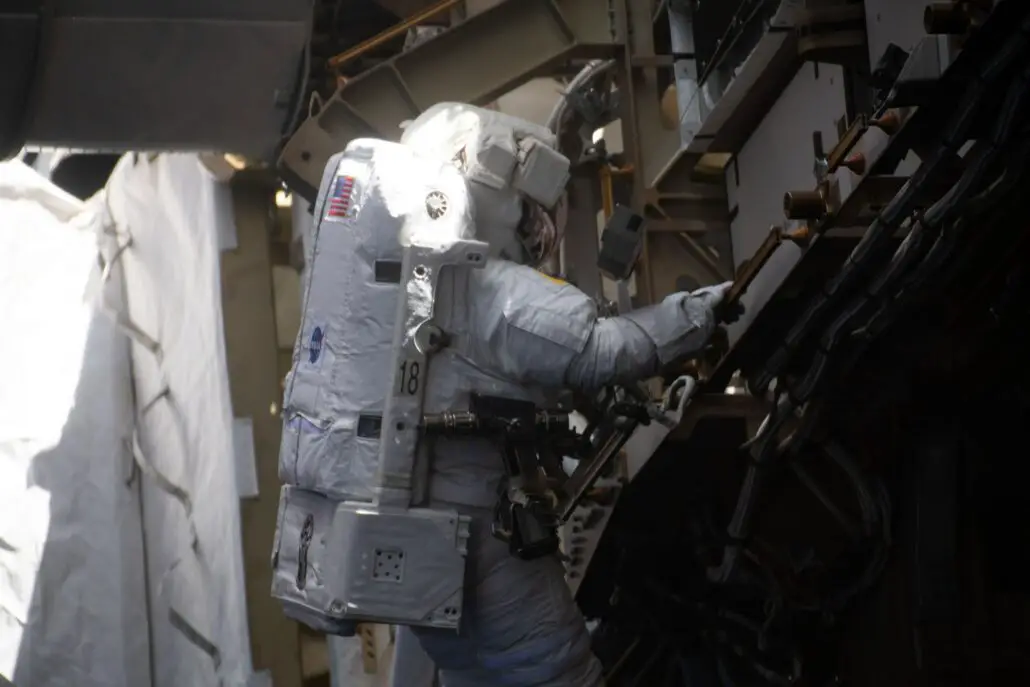
In response to the astronaut’s assessment that flights to Mars would need backup exercise equipment to guarantee that the crew is strong enough to do activities on the surface, Cruise continued the conversation by asking:
That is an excellent point. That is an excellent point. It is intriguing because we know what 0 g is and, I believe, have a good notion of what, how the body acts under 0 g over a long length of time and, of course, on Earth, but all those tests on the Moon and on our approach to Mars, how is the body at. 6. How will the body evolve as a result of the various forces of gravity? Are these the items you mentioned, and did you examine any of them as you prepared for this flight?
Glover’s response is as follows:
We had activities where they had to climb up a contraption and move some, some large masses just after launch — I am sorry, just after landing, just hours after they landed — the crew that flew to the space station after us in a Dragon, and when they got back, they actually had an activity just after launch — I am sorry, just after landing, just within hours after they landed, we had activities where they had to climb up a contraption and move some, some large masses just after launch If you landed in the water in your capsule after being deconditioned after being in space for a lengthy amount of time, you would be able to toss out the emergency equipment into the water.
The worst phase of deconditioning, according to our Apollo astronauts, was after a 14- to 21-day trip in orbit, somewhere in the third week of being in space, and that is how our Moon missions will go. As a result, we need to know that people can operate and function in that environment after returning deconditioned, landing in the sea, and maybe landing off target. So, we consider it, but for missions to the station, we will remain in weightlessness for a lengthy amount of time before returning to 1 g. So, our concentration is on 1 g, but I believe we need to develop methods to assess things like this, you know, returning from the Moon or being on Mars, because it is incredible — I was just composing an email to the people who had just arrived at Crew-3, and one of the things I urged them to do was study the lessons that space would teach them. I offered the example of the Apollo astronauts and the hop they would make on the Moon’s surface: they were not instructed how to do it; instead, they invented it.
When asked about his favorite view of the Earth from the ISS, Glover elaborated on his first surprise at seeing the Earth from a different perspective than a fighter pilot:
But I believe the vision that had the most influence on me was the first time I saw the Earth from orbit, which was shortly after launch. We made it to orbit successfully, and we only had 27 hours till we had to catch up to the space station and dock.
So we had time to change out of our suits, eat, and use the restroom, and I headed to the window to gaze out. And, first and foremost, the Earth’s orientation, I assumed I was merely accustomed to viewing the Earth as you see it in this photo, with the horizon there and the Earth below.
And it was sideways, and I felt like I was looking out from under the Earth, and I was simply astounded by the perspective, how much detail I could see, but also how much of that detail I could see.
So I just grabbed my iPad and began shooting a video. It was not that I did not want to show the images to anyone. I wanted to capture the emotion of awestruckness and share it with others, as well as how it affected me.
As a result, it was a very profound moment. And, you know, I believe the Overview Impact, if you have heard of it, seeing the globe without boundaries, without labels, just as it is; witnessing the vastness and majesty of the planet, but also its fragility, has an effect on most people who have the luxury of traveling to space. But, now that I have been back for a little over six months, I see that it is essential, and it is magnificent, and it is a pleasure to experience it, but one of the reasons it is so strong and impacting is because of what you accumulate throughout your existence on Earth.
Glover said that one of the most remarkable features of living onboard the orbiting space laboratory is the scent, in response to Cruise’s query about the experience. He described the distinct odors for the various regions of the ISS as follows:
…When you first come to the space station, you notice the scent the greatest because you have been exposed to it for a while and have grown used to it, but it was an unusual mix. It is also, once again, local.
The restroom is located in the same module as the lifting and strength training equipment. So it is the module with the strongest stink. That one has a locker room odor. As a result, the whole space station has a factory-like odor. It has a machine-like, sterile, metallic appearance about it. It has a strong odor in the workplace. When you come into a hospital, you immediately notice that it smells like one. We work pretty hard to keep it clean because it has this antiseptic, germ-free quality.
And there is simply hum and ascent between all of the equipment, the fans on the computers, and the power boxes on all of the stuff. It is nice because if that ever changes, you know the earth did something or something broke, and we would all hear something shut down and think, uh-oh, something just changed, and the ground would call you. As a result, you get used to all of the space station’s characteristics. You grow acquainted with the personality and features of ISS almost like another crew member up there.
Glover explains how his return journey aboard the SpaceX Crew Dragon ended calmly and comfortably
When Cruise questioned Glover about his experience returning to Earth, the session finally came to a close. The astronaut’s most vivid memory of this portion was the need to urinate himself since he had forgotten how heavy a full bladder felt in microgravity, where less force acts on the human body. He also detailed the feelings he had during the different phases of the return journey:
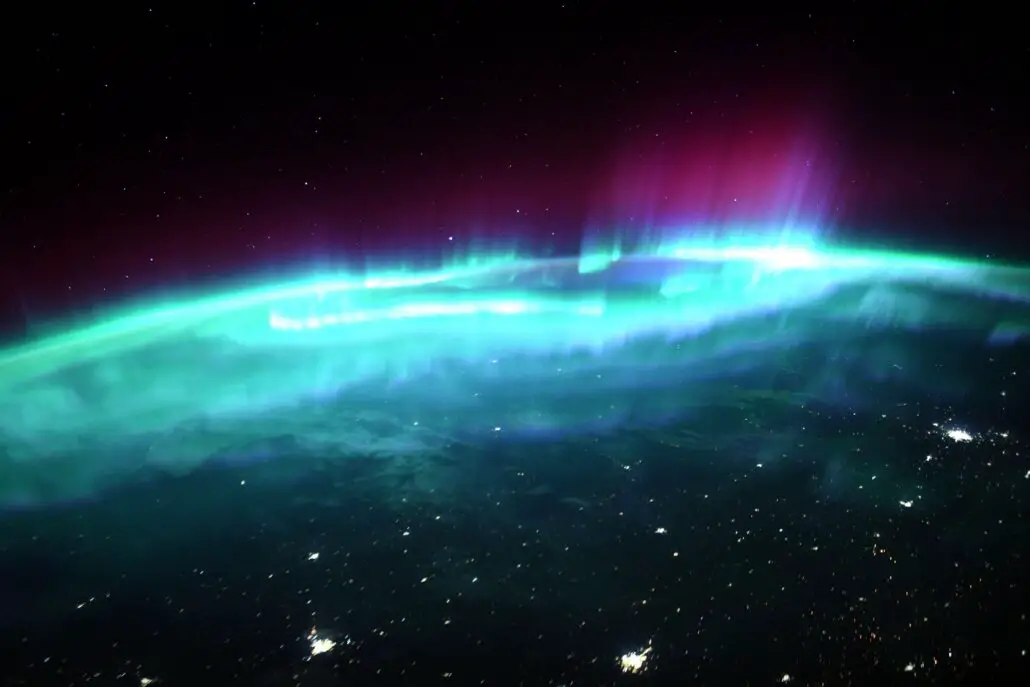
So, coming back to Earth after six months is really rather exciting. When we first enter the atmosphere, we do a deorbit burn, which slows down the spacecraft and causes it to drop.
Then it reaches the atmosphere, where the pull of the air slows it down. In fact, you are traveling so quickly that friction heats up and ignites the air surrounding the car, resulting in a plasma cloud. That is why you return to Earth like a fiery meteor. As a result, the heatshield is doing its function.
However, this is also the time when you begin to feel your first g. As the g on the spaceship increases, you begin to feel your weight gain, which is fascinating after six months of weightlessness. That is the first impression. Then, when we got to about 18,000 feet, the drogue parachutes came out, and the g has been coming up, and the g is into your chest, just like on launch, because we turned the spacecraft backward to put the heat shield into the wind, so the pressure is still going into your chest, making it difficult to breathe, and you feel like your face is stretching out.
So you go to 18,000 feet and the drogue parachutes deploy, which is a pretty tactile experience. You can feel the truck wobbling as it travels. That is what we call a Dutch roll. It seems like you are rolling, pitching, and yawing all at once, and then it settles down and the drogue chutes begin to slow you down and guide you into the envelope where the main parachutes emerge. Then those massive parachutes appear, and the reef. They begin by being quite closed, then gradually open somewhat, and eventually fully open over time.
As a result, you can sense it. It is almost as if you are holding the end of a bungee cord. When they first come out, the car shakes and you bounce about.
It nearly feels like you are driving over a pothole. After experiencing the first g, I felt a little lightness. It was fascinating to feel weightless once again. Then they broaden out again, slowing you down, and you experience the same jerking feeling.
Then you are traveling beneath these gigantic four parachutes from approximately 6000 feet down to the surface, and we were, touching down at about 27 feet per second. If you have ever skydived, you know that most parachutes send you down at a speed of 20 to 30 feet per second, or seven meters per second, and that is roughly how fast sports parachutes bring you down to the earth.
So, we hit the water at about the same speed, and you know, the water is a better place to touch down than the ground. As a result, the landing was really pretty gentle because the spacecraft yields; it sinks a little into the sea, then rebounds and bounces.
And since it was late at night and the waters were quiet, it seemed like we were just swaying softly. Because you could not see the horizon outside, there was no sensation of disorientation, which was something I was concerned about.
It felt wonderful and relaxing like I was rocking back and forth in a rocking rocker. And it was really rather enjoyable. It was really reassuring. However, it was at that time, and now that I am back in 1 g, I am feeling my 200 pounds, that I realized I needed to pee. For the first time, I could feel the weight of my bladder, which was a fascinating experience…
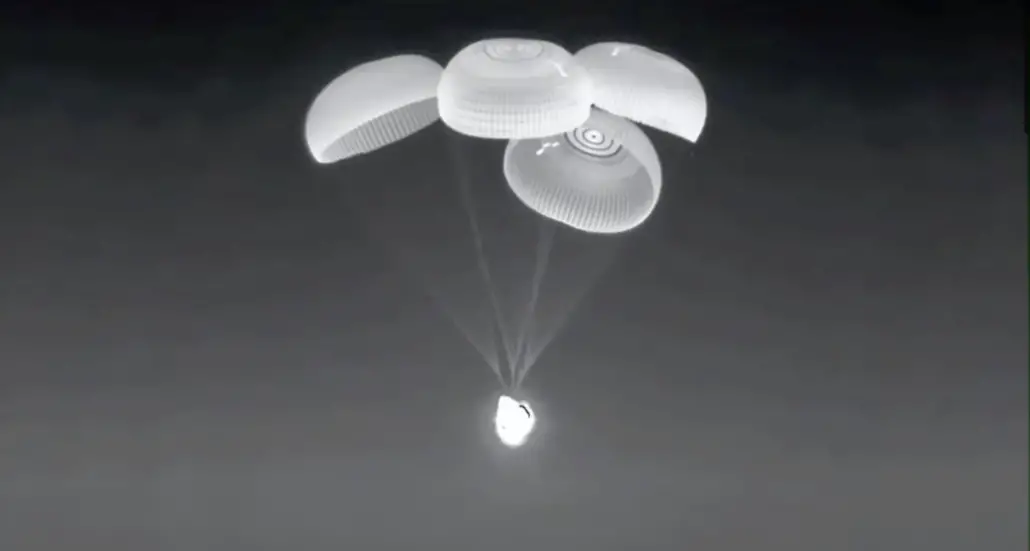
Cruise was clearly taken aback after hearing about the astronaut’s adventures. Throughout the 74-minute podcast, Glover used the word “amazing” eight times and its equivalents seven times to describe his experiences.

